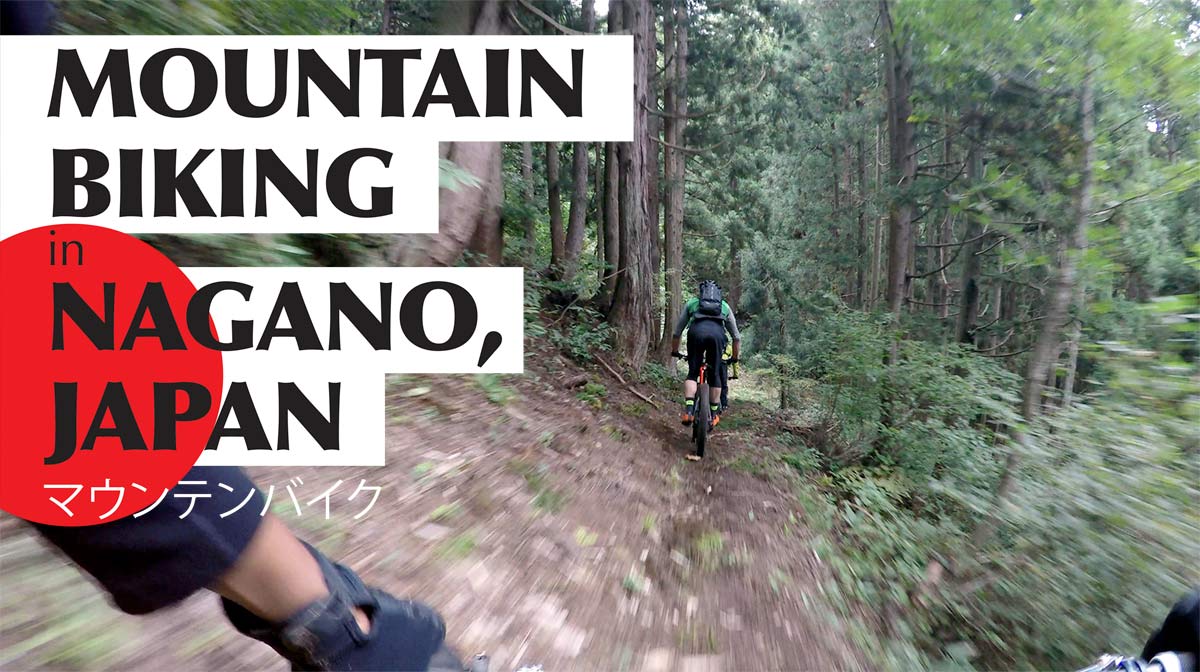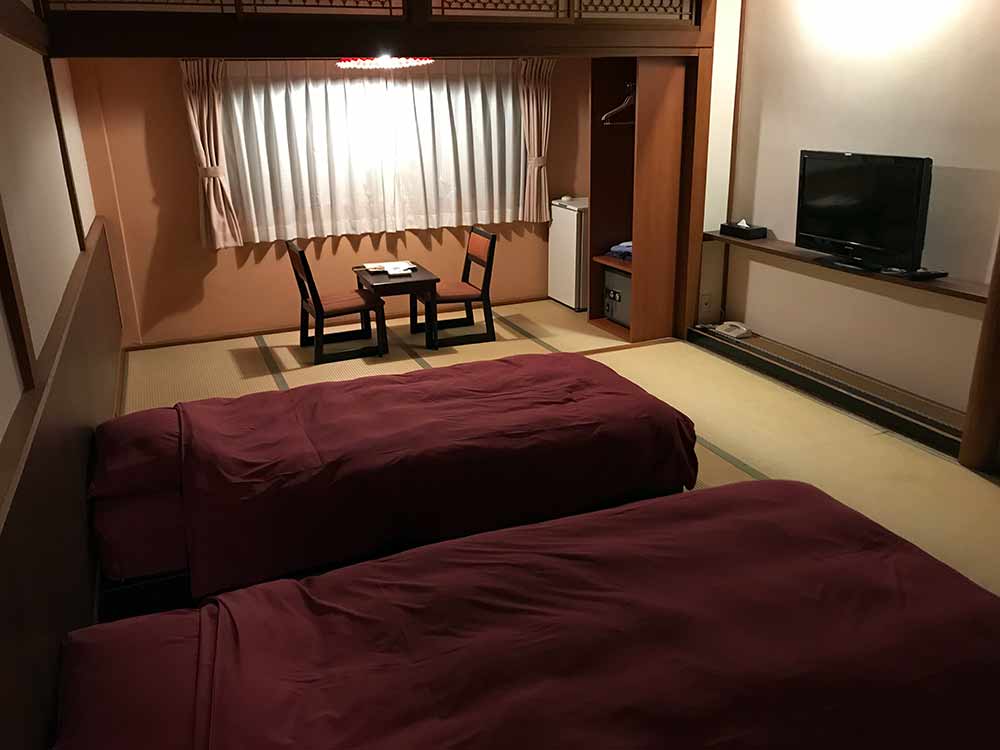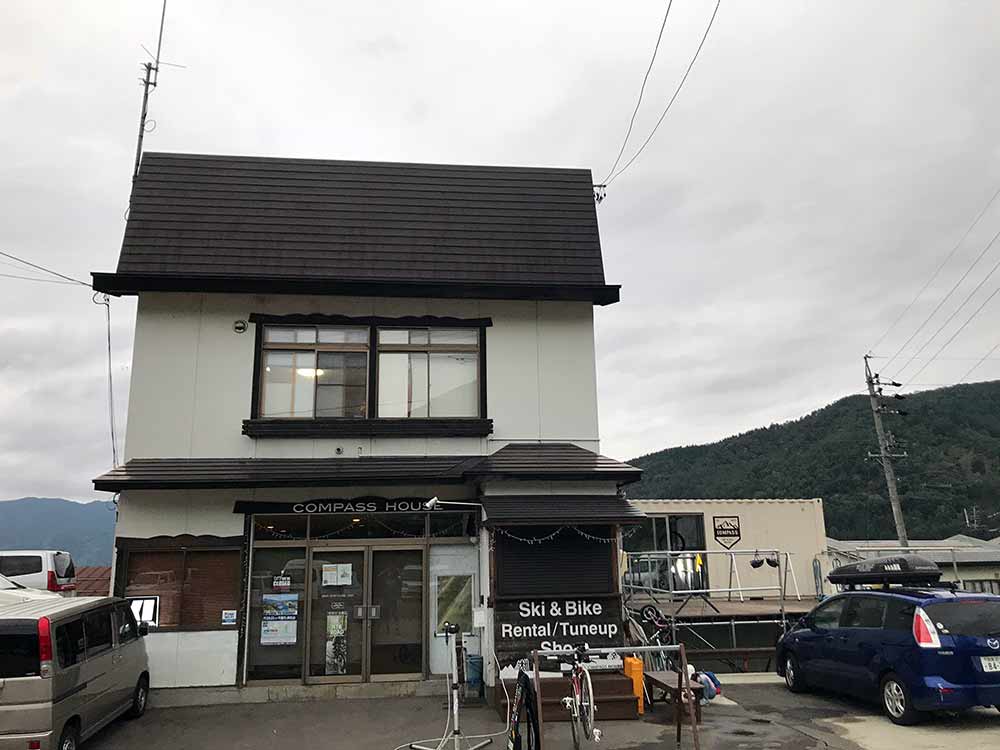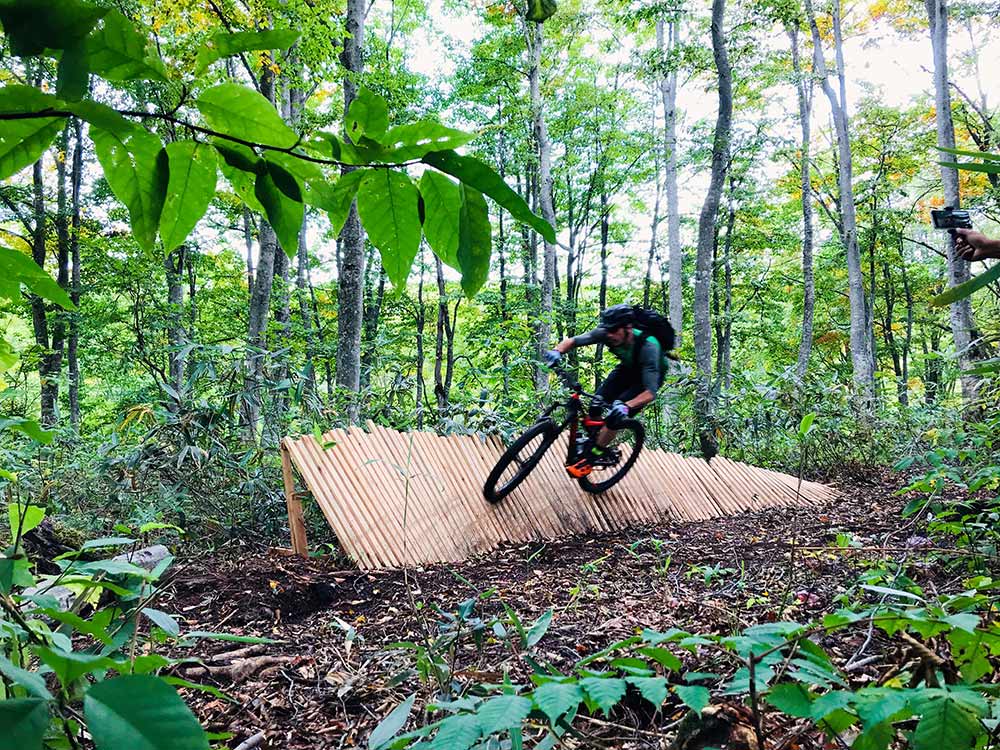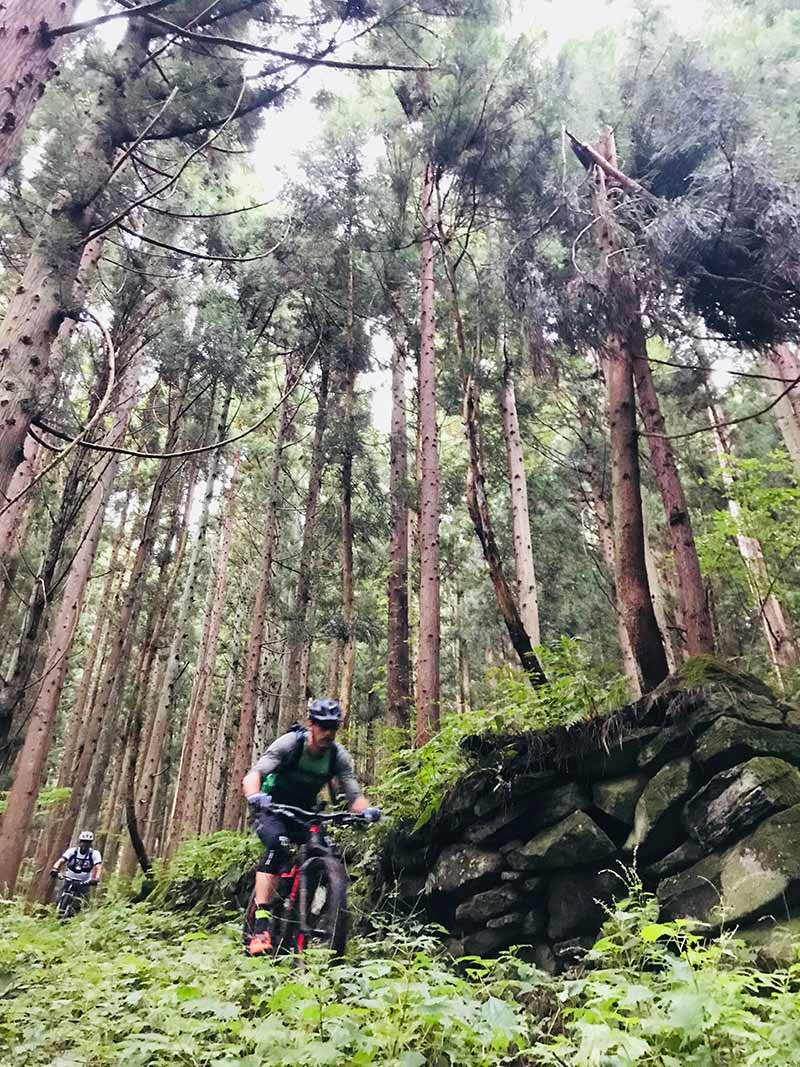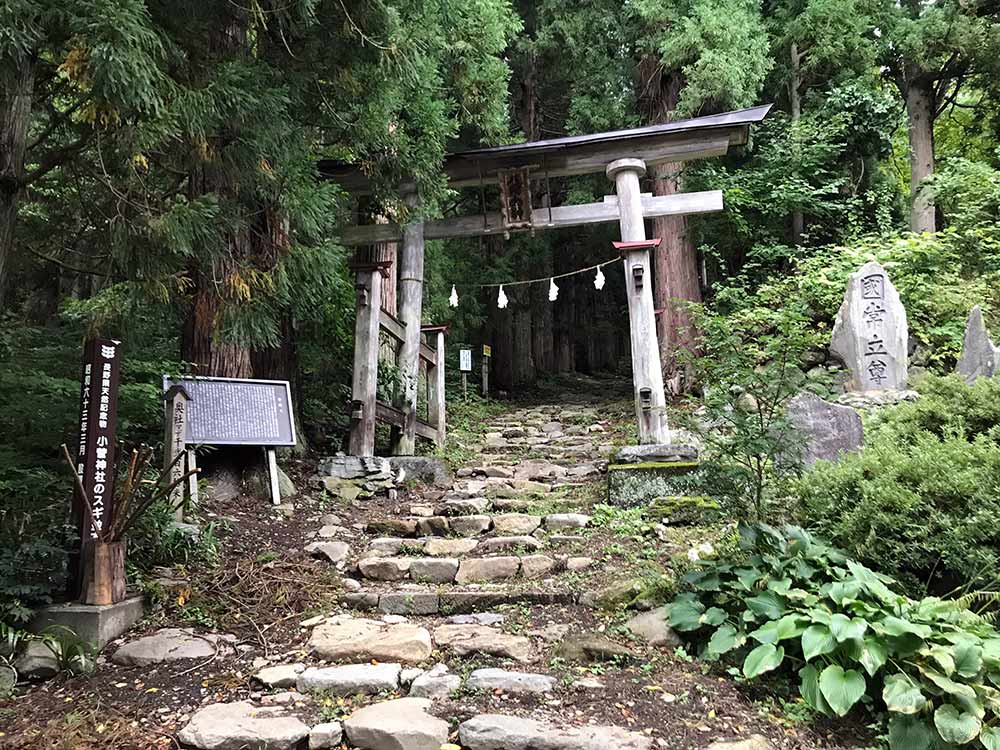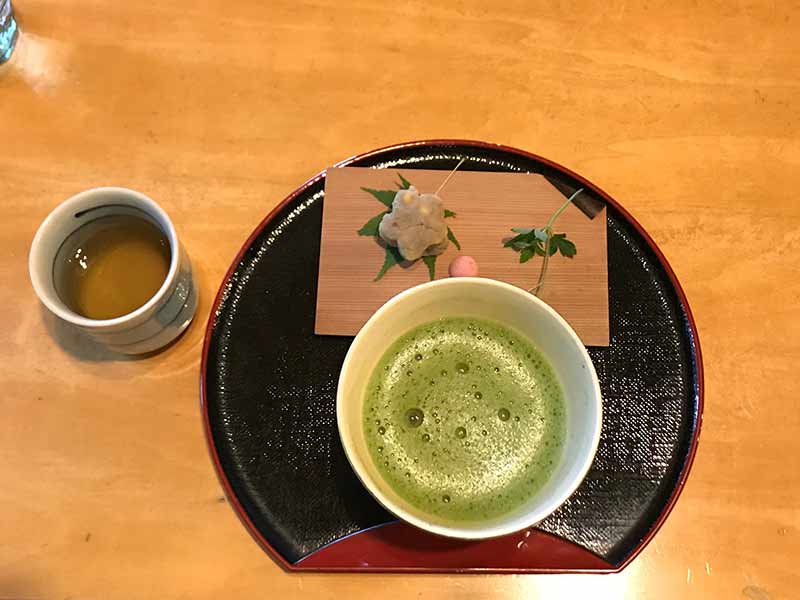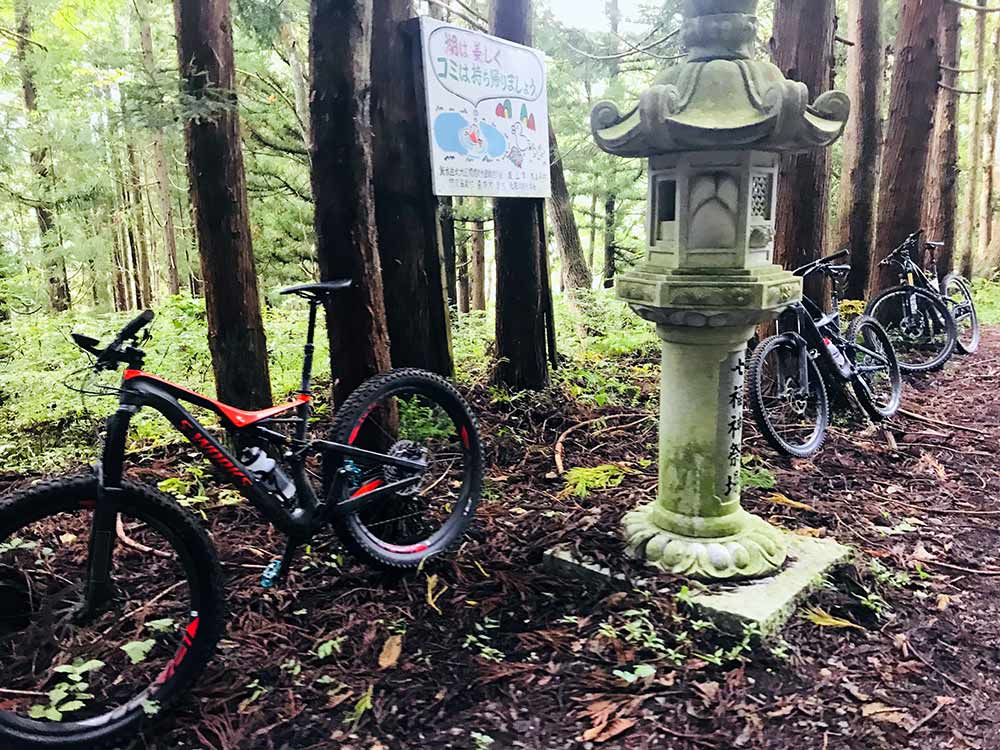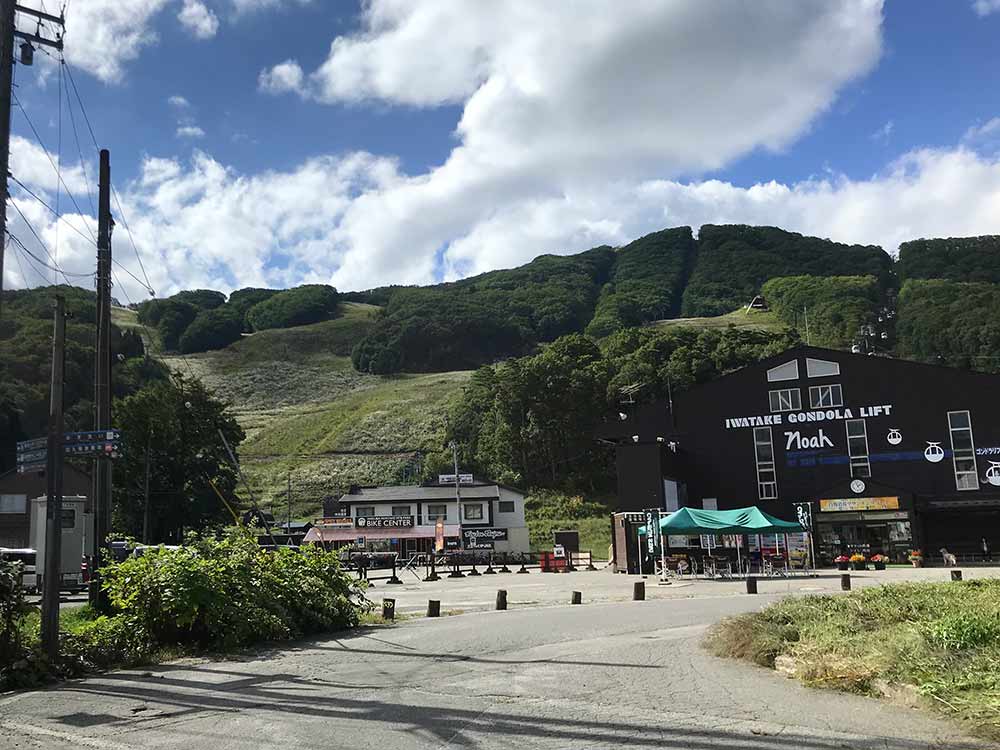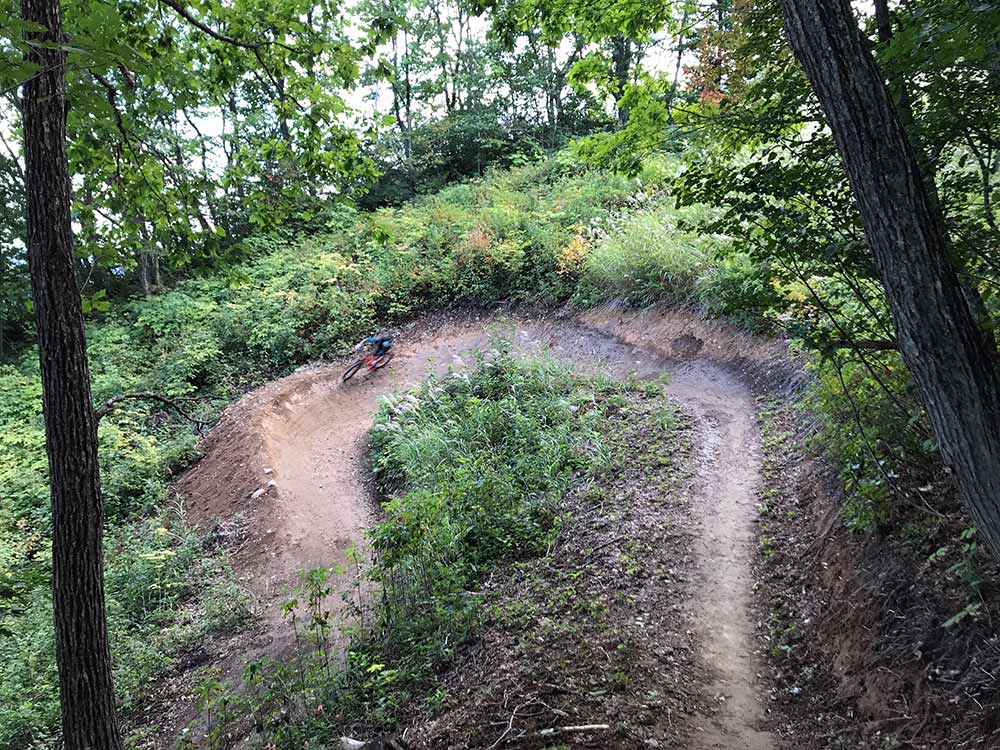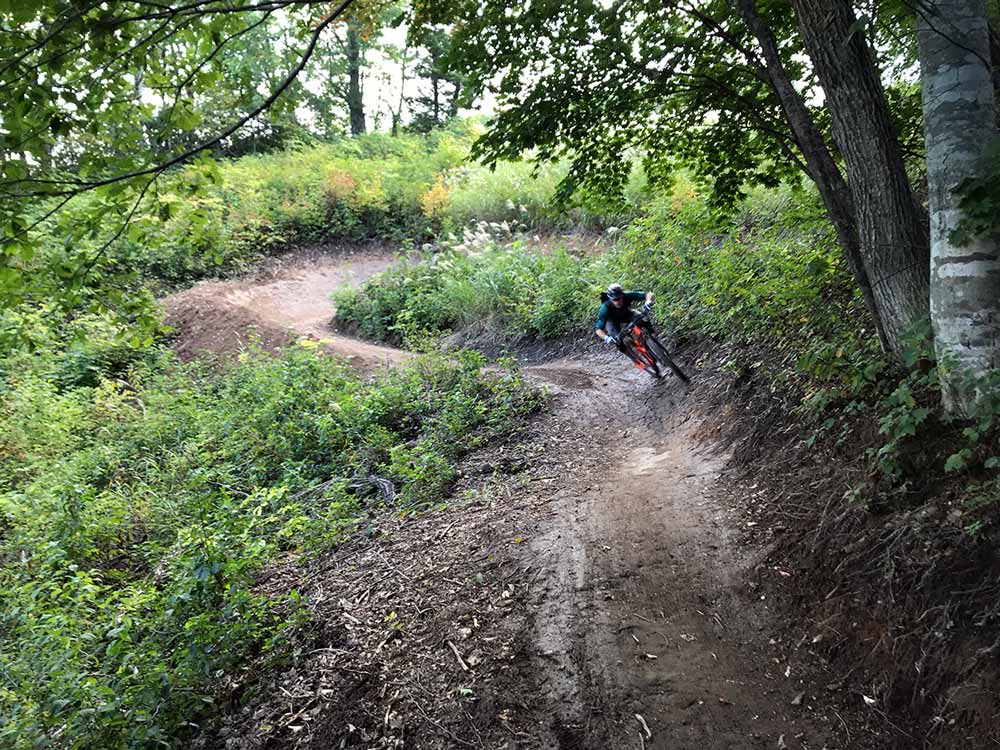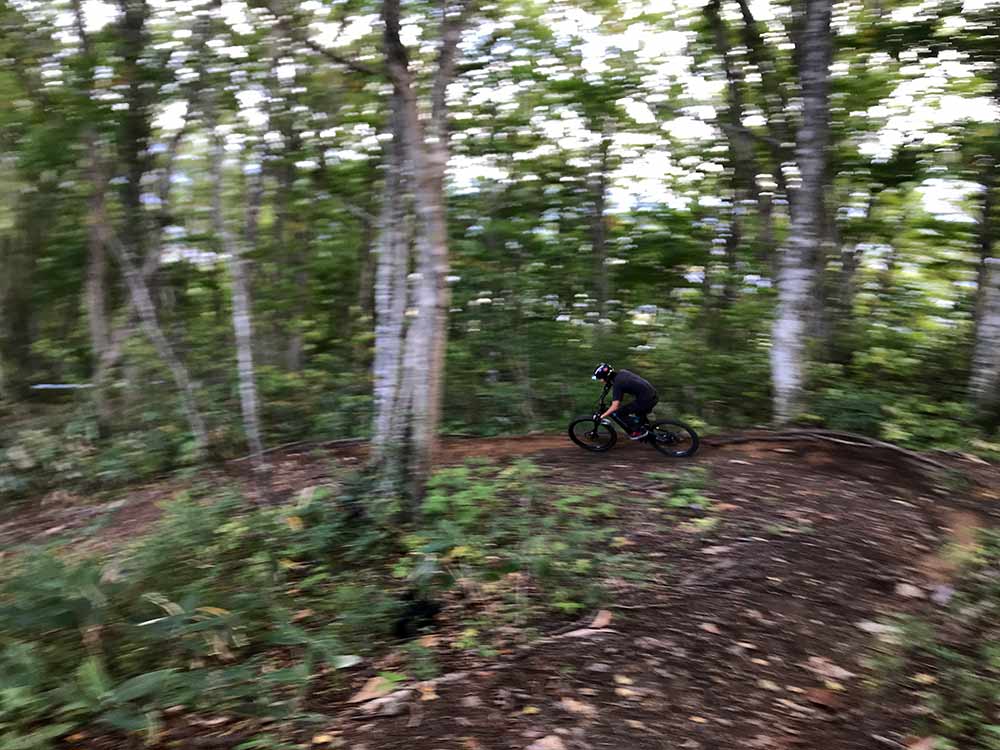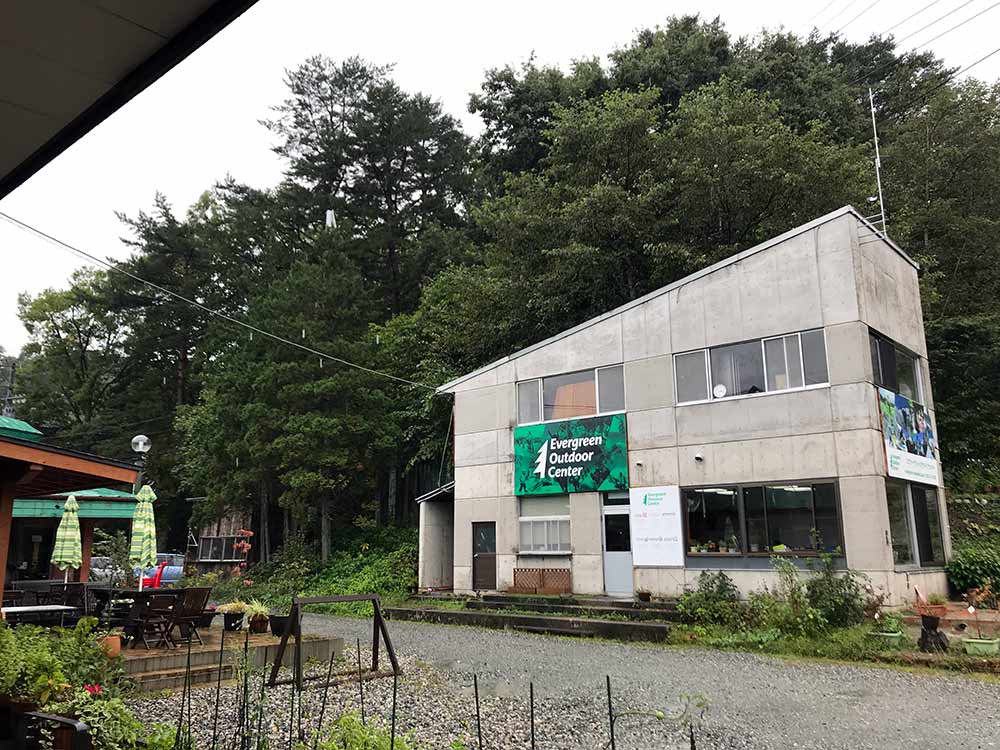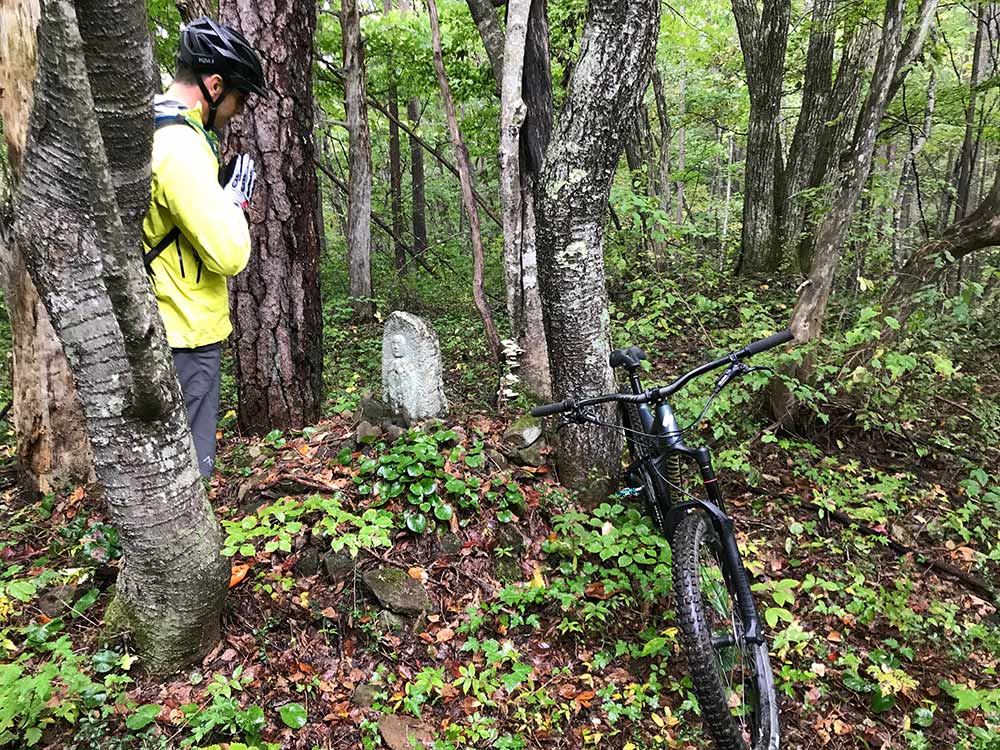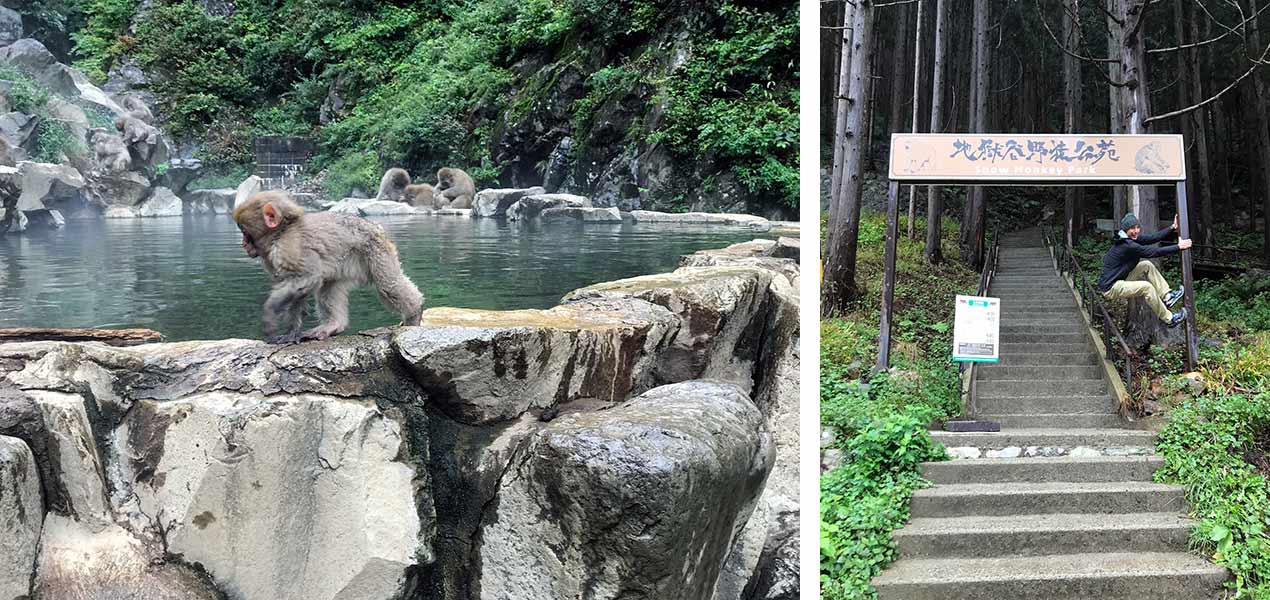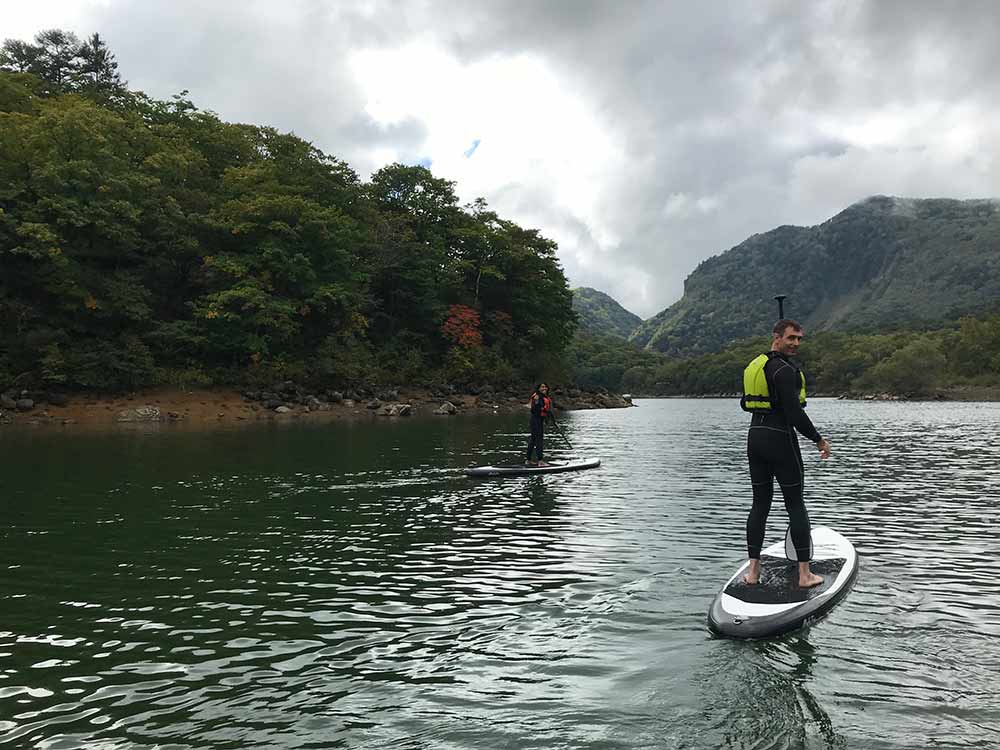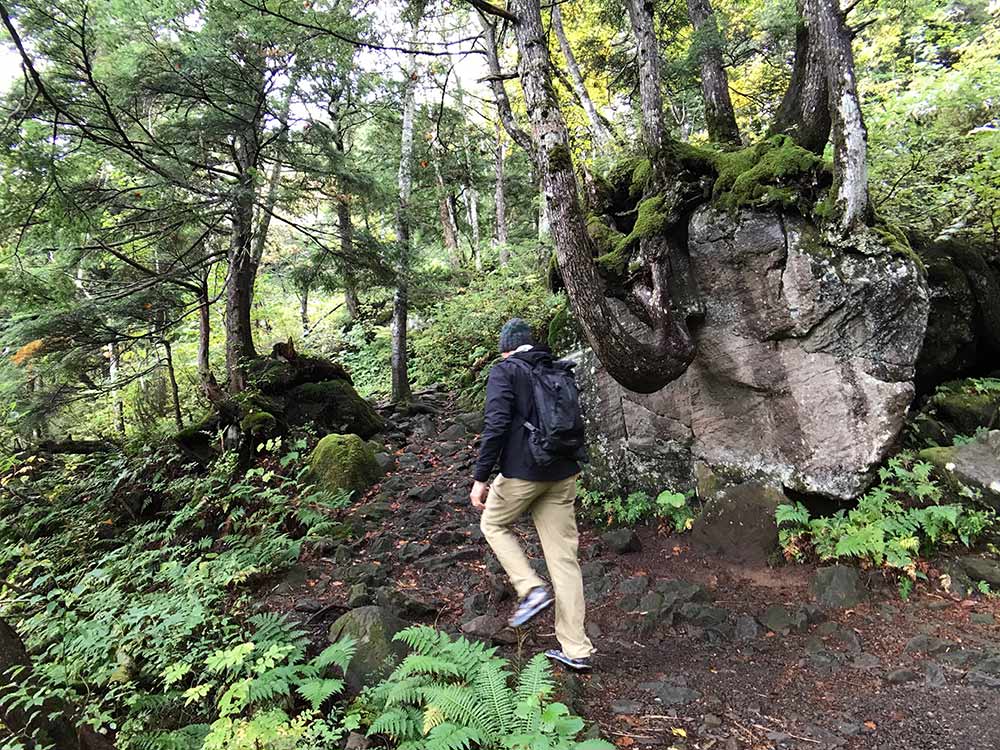Chances are, if you’re planning a mountain bike trip to Japan, the vacation is only partially about the riding. And that’s a good thing. While the riding is super fun, and there’s a lot of potential for road (both paved and gravel) riding, there’s a ton more to do in the area. Not to mention the cultural experience, the food, the hot springs and everything else. So we’ll touch on all that below, along with tips on how and where to ride, what type of mountain bike to bring, and local knowledge to make your trip amazing!
Basic Background Info
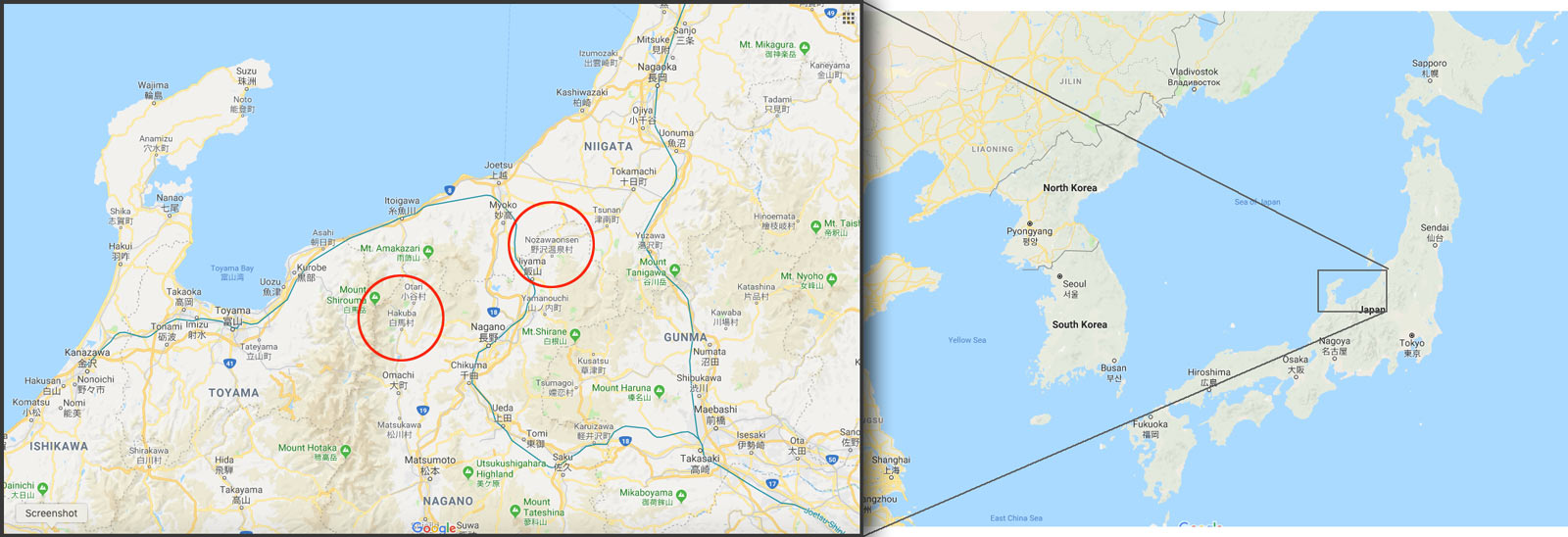
If you’ve heard of mountain biking in Japan, it’s probably been about Hakuba. That area has the best known mountain bike park, though that may change soon. Hakuba is in the Nagano Prefecture, which is on the western side of the main island. Think of a Prefecture like a U.S. state, and Hakuba is a city inside it.
We visited two areas, Nozawa-Onsen and Hakuba Valley, highlighted on the map above. The common element is that having a local guide helped tremendously. Outside of the proper bike park, marked trails are few and far between, and as an outsider they’d be difficult to connect. But there is abundant, glorious singletrack and natural terrain hiding in the lush green woods, and riding with a local brings it all to you.
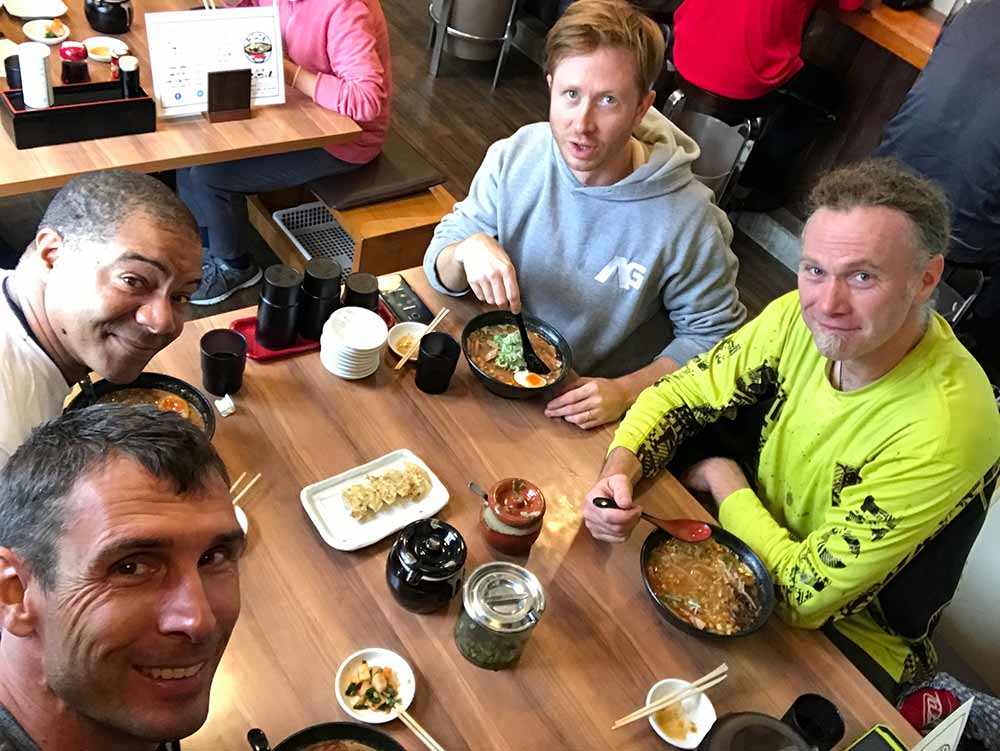
The other common element is food. Noodle bowls, tea and coffee are all there, and I’ve included several recommendations below based on my own experience and local tips. Lastly, I’d strongly recommend bringing your own bike, and leaving plenty of time (several days) for doing non-bike stuff. Virtually all of the rental fleets are sized small and medium. And while there are a few decent bikes in the lot, there’s almost nothing for a 5’11 or taller rider, and you’ll have more fun on your own bike anyway. I’d recommend something in the 130-160mm travel range that’s pedal-able. A good 29er trail or all-mountain bike would be just right.
Off the bike, there are ton’s of other cool things to do, from hiking to canyoneering to paddle boarding a river. There’s also fly fishing, and just walking through the villages to explore. Particularly in Nozawa-Onsen (“onsen” essentially translates as “hot spring bath”), there are public hot springs to soak in after an active day. Summer and early fall are good times to visit for the riding, and they call this the “Green Season”. In winter, they get legendary powder if skiing is more your thing. More on the extracurricular activities at bottom of article.
OK, last thing to know: Hotels typically charge per person and include breakfast and sometimes dinner. The problem with this is that some can run $150 or more per night…per person. So a family of four could easily be $600 or more per night. It’s worth looking into AirBNB or other family-style lodging if saving money is more important than included meals.
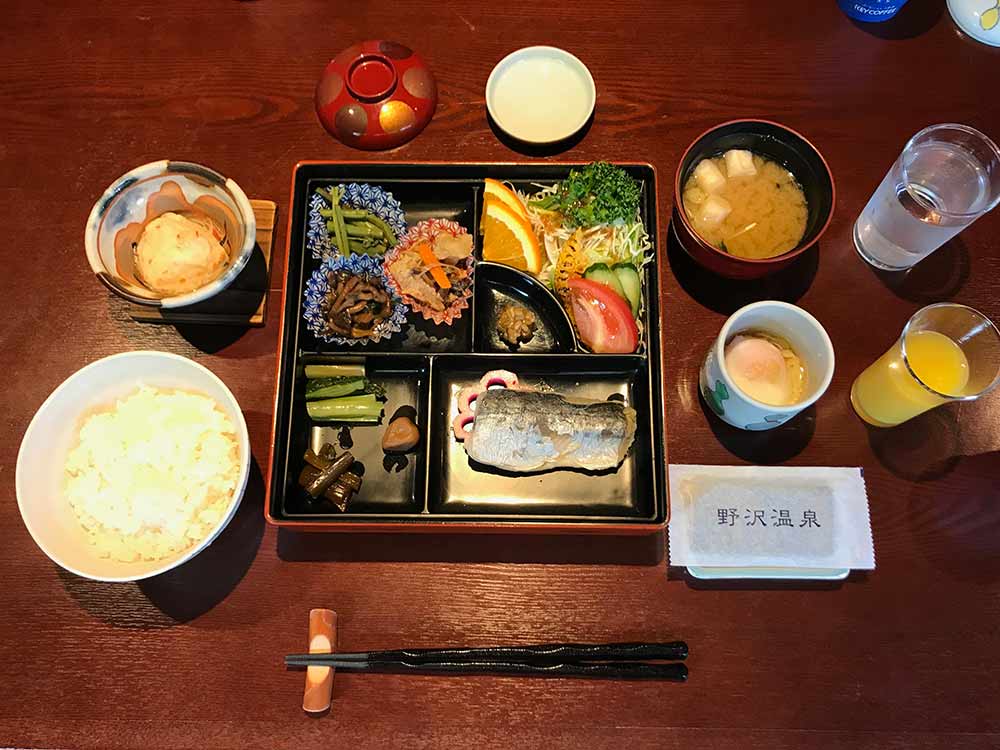
The only nudge I’d give toward the hotel is that the meals tend to be very traditional, multi-course affairs with truly local food that you’d be unlikely to figure out and order on your own at a restaurant. And, if you’re traveling with buddies, there’s basically no incentive to share a room since you’re all paying the same amount…just get your own room for the same price!
Nozawa-Onsen
The video above shows Nozawa’s various trails, which range from standard singletrack to natural trails deep in the woods. Nozawa Snow Resort has the beginnings of a bike park, but there’s a long way to go. We rode bits of it, which had small man-made ramps and berms littered along it, but it was the natural forest riding that was more interesting.
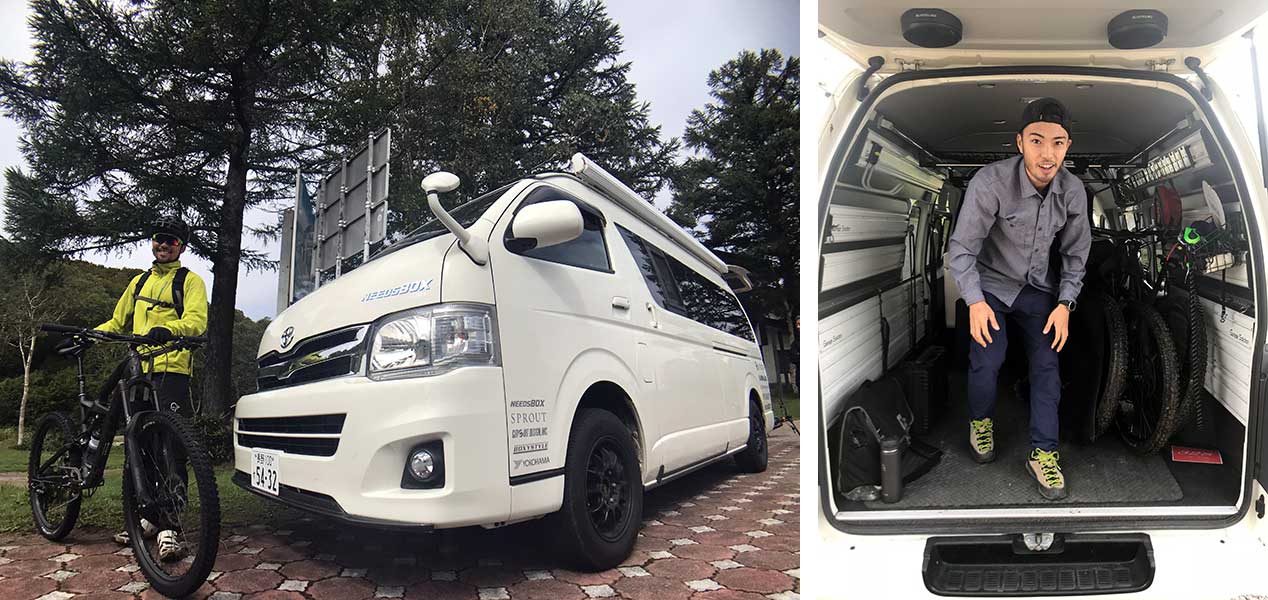
Compass House supported our trip with a shuttle run, and shop owner Yuuto Ueno (left, in front of van) guided us through the trails. They have a small fleet of Specialized full suspension bikes for rent, but they’re virtually all small and medium sizes.
Morning was spent riding the park’s lightly used bike trails. It sits high on the mountain, so the bottom of the park is really just the beginning of the good stuff…
The natural trails snaking through the woods are more fun, but you’d almost have to have a guide to find and connect them all.
We rode past ancient stone stairways leading to temples…
…stopped at a tea house for matcha…
…and detoured past various statues and parks. The other benefit to having a guide is someone to tell you about the area you’re riding through. One thing we learned was the challenges in building more singletrack through the woods (in both Nozawa and Hakuba) is dealing with land owners who are very old and property lines that are poorly defined. In Hakuba in particular, they’re creating more opportunities for kids and teens to ride, because they get excited about it and want more trails. Then they bug their grandparents (aka “the landowners”) to open up more access to trail building. It’ll be a slow, generational process, but the ground work is being laid.
The trails that do exist tend to run along property borders where, technically, it’s legal to build a path that allows for travel through the land. Likely a carryover from times before roads, it allows a limited amount of trail building to happen, primarily along ridge lines. The bike parks are another story, keep reading…
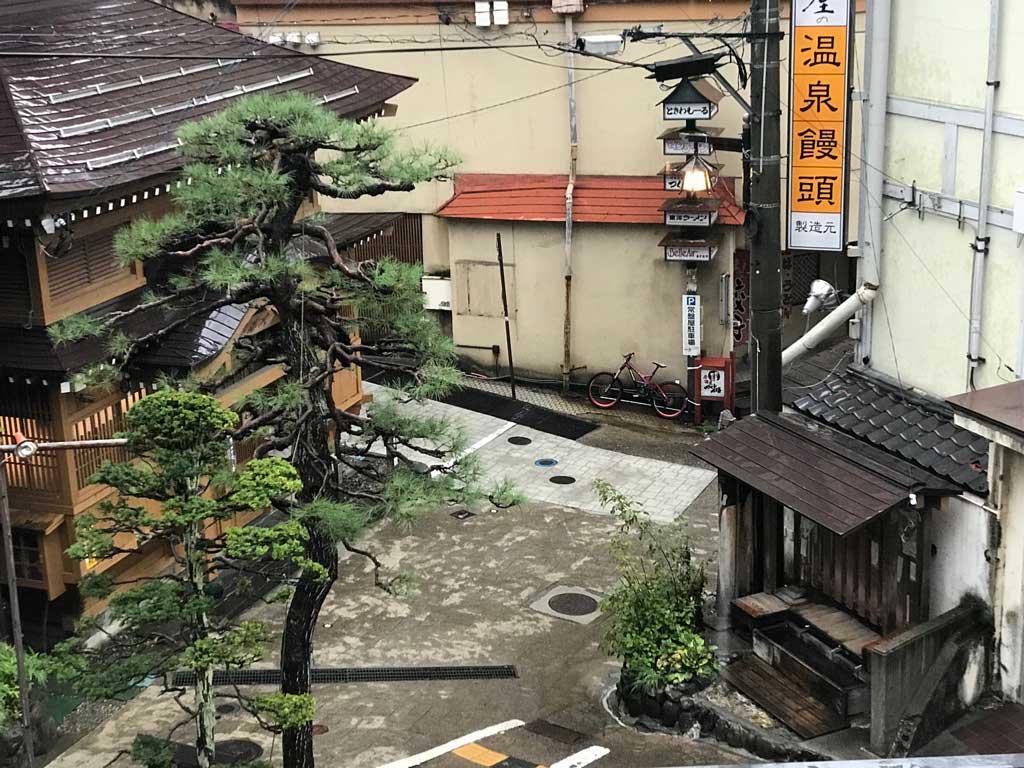
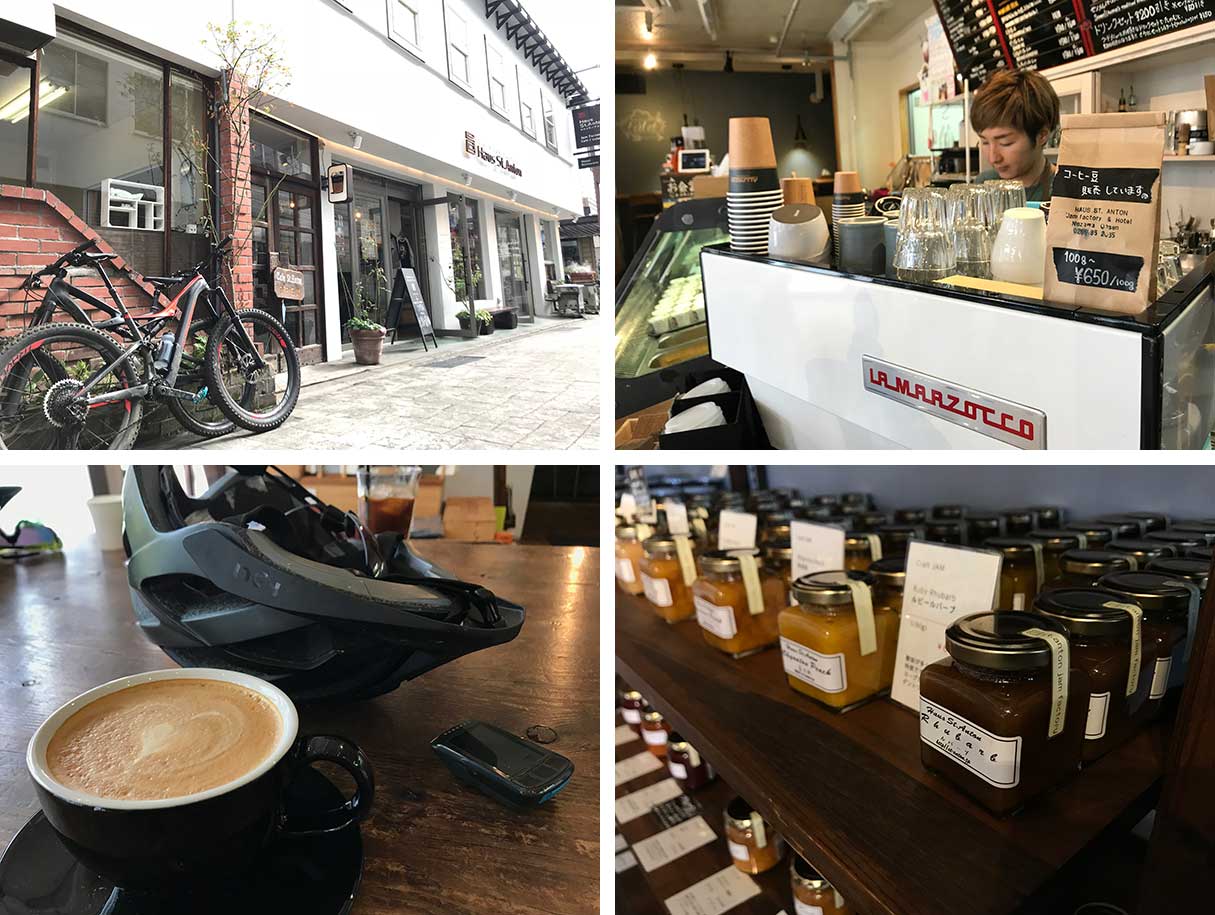
What I loved about Nozawa-Onsen was the multitude of public hot springs throughout town. They’re all free, and you’d see folks wearing bath robes walking through the small streets with their shower caddies. There’s even smaller foot baths here and there, so you can just sit back and people watch while soaking your feet after a long day of riding!
We stayed at the Onsen Ryokan Jonnobi hotel, which was close to everything, including Atarashiya, which has amazing food. Personally, I’d recommend staying here, then making day trips to…
Hakuba Valley
In terms of riding, Hakuba Valley is best known for the lift-served bike park, and it’s pretty good. But there’s also a wealth of trails snaking throughout the area, for which you’ll definitely want a guide.
But first, the park. While you may find other “bike park” results in a Google search, the one you want is the Hakuba Iwatake MTB Park. As the video shows, it’s an impeccably maintained trail network that flows well, keeps its berms smooth throughout the season, and is just a blast to ride.
Most of the runs are groomed, with bermed turns and sculpted swoops, dips and jumps…
…but there’s also a great natural terrain section that offers a different kind of challenge for riders that prefer a more wooded, singletrack-like experience.

Grab rental bikes, tubes or CO2s, or repairs at Spicy Outdoor World. We borrowed the Rossignol full suspension bikes which were actually quite decent despite being a new line from the snow sports brand. They offer guides, too, but thanks to a well marked and mapped park, you really don’t need one if you’re staying in bounds. Oh, and there’s a killer ropes course playground that’s free and open to the public nearby, perfect for any non-riding kids and family along on the trip!
Hakuba 47 is the other bike park, and it’s the one with the mind-blowingly large pump track in the video. But, according to some locals, they may not reopen their lift-served bike park in 2019, so check ahead of time.
Exploring Hakuba Valley by Bike
Supposing you like heading off the beaten path, check out Evergreen Outdoor Center. It’s run by English-speaking guides that can loop you through the surrounding mountains and tell you about the area and why there are Buddha statues in the middle of the woods:
They also guided us to Ramen Tottsuan, the perfect finish to a high mileage day. Or grab a big, properly sized coffee from Sounds Like Café, which also serves up monstrous hamburgers and sandwiches, too! (Lion Cafe and Senju Coffee were two other local recommendations) Evergreen runs year round outdoor activities, from riding to canyoneering and waterfall hikes to skiing and backcountry exploration. And they’ve got all the equipment you’ll need for any of it…but, like Spicy and Compass House, almost all of the bikes are smalls and mediums. Oh, and brakes are set up UK/moto style on rental bikes (left hand is rear brake).
For something like a taste of home, hit up Lucky Petes. It’s an Aussie/American style bar and cafe, but for the 2019 season, they’re opening a B&B style condo that’ll have secure bike storage, a bike wash, and more amenities catering to mountain bikers. Bigger groups should check out The Powder House. And if you like craft beers, check out Hakuba Brewing Company or Hakuba Brew Pub. This area is more spread out than Nozawa-Onsen, so it’s not as easy to ride everywhere you’ll want to go.
Off the Bike
Close by is an area called Shiga Kogen, home to the Snow Monkey Park. This place is worth a visit, and it’s an easy half-day adventure in an area filled with a LOT of outdoor activities.
Hit up Shigakogen Mountain Discovery for guided tours and activities like SUP, river paddle boarding, canyoneering, waterfall climbing and rappelling, and more. There’s also plenty of fly fishing in the area.
There’s also hiking, the Kanman Falls Observatory and Tanohara Marsh. A bit further to the east, somewhat en route to Hakuba Valley, is the Togakushi Ninja Village. That one’s geared toward the really young, but there is a cool museum of ninja tools and weapons, and a shuriken throwing range to entertain the “adults” in your group. Across the street from that is Okusha Trail, an excellent hike through towering trees leading to a temple. And just down the street is a very famous Soba noodle restaurant called Sobanomi… reservations recommended.
If you have more time and head north into the Niigata Prefecture, grab some Kanzuri aged chili paste (this is what they mean by umami) on the way to Bike Loop in Joetsu, near the coast. Bike Loop is the kind of bike shop you’ll want to just hang out in because they still carry the high end bits and pieces that we all love to look at. And, owners Akira & Katsumi Kusama opened Pedal Rest coffee shop next door, where they make the best Latte I’ve every had. They told me the cycling culture in their area is to do the ride and head home, but they want to create an aprés ride culture where cyclists hang out and enjoy a coffee or beer (they have several on tap and in bottles) after the ride. On your way back to the mountains, swing by Ayumasasume Sake Distillery and sample various types to find your new favorite.
Other things you should know about the area:
- Izakaya is type of restaurant that’s casual but tasty for when you want good food, but a chill atmosphere.
- They drive on the left side of the road, so you need to ride on the left side of the road!!! That means when you cross a street, look both ways, in reverse, and twice!
- Not all bathrooms have towels or dryers, apparently because many folks carry around their own little hand towel.
- There are very few 3-prong outlets for electronics, so pack charging cords without the ground prong. Japan uses U.S.-style plugs, but without the third hole for the ground plug in many spots, especially once you get out into the country where we were riding. Occasionally you can find a grounded outlet for their warming massage toilets, but even that’s a gamble.
- Grab a local SIM card at the airport when you land, there’ll be very affordable options for unlimited 4G data. It worked fine for me everywhere we went for the entire week, even up in the mountains.
- Most of the places mentioned have websites entirely in Japanese, so it’s sometimes easier to just search for them on Google Maps to get info in English.
How to Get There
Fly into Narita International Airport in Tokyo, then take the JR East high speed train on the Joetsu-Shinkansen line to the Liyama station. For Nozawa-Onsen, catch the regional Liyama train north to Kamisakai station. For Hakuba, catch the Liyama train south until the Toyono station, then switch onto the Shinano Tetsudo Kita line going north until Myokokogen. Hop off that line and you’ll literally be across the street from Lucky Petes (tell Pete that Bikerumor sent ya)!
Getting Your Bike There
Want to travel with your own bike? Here are example rates as of January 8, 2019, to help you determine the best way to get your bike to and from Hakuba. Rates based on checking sporting equipment/oversize baggage with Delta Airlines fees versus shipping in a Thule Transfer 669 hard case (one of the heaviest cases we know of) using Bikeflights.com. Shipping time is each way, not a combined total.
| METHOD | ORIGIN | DELIVERY | RETURN | TRANSIT TIME |
| Delta | N/A | $150 | $150 | same as you |
| BikeFlights | Los Angeles | $246 | $411 | 10 bus. days |
| BikeFlights | Kansas City | $246 | $411 | 10 bus. days |
| BikeFlights | Washington DC | $246 | $411 | 10 bus. days |
Ready to ship it? Check rates for free right now on BikeFlights.com!
Other Resources
- Most links for the places we went are throughout the story.
- Here’s an overview of these and other mountain bike parks in the area.
- If you really want to get crazy, check out the Nozawa-Onsen Fire Festival. This would never fly in the U.S.
Full Disclosure: My trip was paid for by Japan Tourism Board. We were invited for the purposes of testing potential mountain bike tourism opportunities in the area. Following the trip, we were asked to provide our feedback on the riding, guides and overall potential for the area as a MTB destination. This article was not paid for nor was it required as part of being included on the trip, but I wanted to share the experience and tips for creating your own riding and cultural vacation. For more info on non-cycling opportunities in Nagano, Japan (and elsewhere in the world), follow @adventurouswayoflife on Instagram, too!
